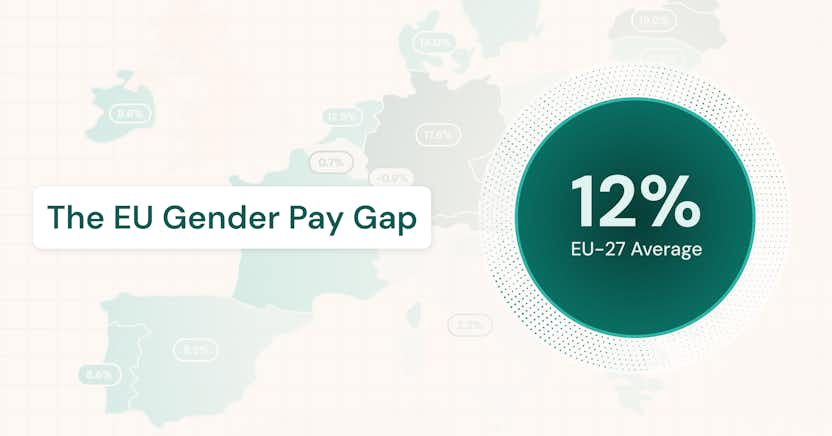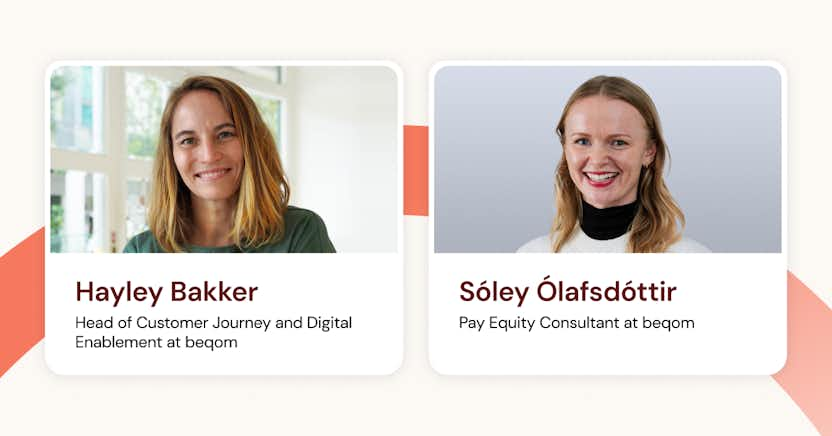Building Pay Transparency from the Inside Out: From Pay Philosophy to Job Postings

Learn more about the following beqom products
Pay transparency is not only a regulatory requirement in an increasing number of countries and states – it is also a chance for companies to drive cultural change. It does this by increasing employee engagement and trust, attracting qualified candidates for open roles, and reducing bias, which all contribute to creating a high performance culture.
However, some organizations fail to take full advantage of its benefits. This often happens when the policy or practice changes are not sufficiently integrated into the organization. In other words, transparent compensation works best when it is not just implemented at the surface level or as an afterthought – but truly baked into the organization.
Here’s how to adopt transparent compensation practices and policies from the inside out in order to fully realize the benefits of pay transparency.
Articulate a compensation philosophy: who are we and what are we doing?
A compensation philosophy states how the organization’s pay practices express and support its core values and strategic goals.
Here are some questions to consider when developing a compensation philosophy:
- What are your organization’s core values?
- What makes your organization stand out in the marketplace as an employer?
- How does your organization pay in comparison to the market?
- What is its approach to total rewards, including aspects of compensation like health benefits, education, bonuses, or equity?
- Does it provide work-life balance support, like remote/hybrid work options or childcare assistance?
The compensation philosophy should inform all decisions about the compensation structure, so revisiting, revising, or creating this philosophy is the natural first step.
Clarify the compensation plan: what do we value?
Compensation plans explain why each individual in their specific job is paid what they are paid. We offer more comprehensive guidance in this article.
So, what does a great compensation plan look like? Let’s dive into two critical components.
Job grades and salary bands
Job grades account for the skills, responsibilities, and duties associated with each role. Each job grade has an associated salary band. Job grades and salary bands are the foundation of your compensation structure. They ensure consistency and fairness by grouping roles with similar levels of responsibility, making it clear how an employee can grow within the company.
Drivers of pay
These drivers are objective factors that determine where an employee falls within the salary band for their job role. An organization’s definition of these drivers is influenced by what it values. For instance, one company may value formal education credentials more highly, while another places more emphasis on work experience.
Consider a pay equity audit and closing pay gaps
A pay equity audit isn’t always necessary when implementing pay transparency practices, but sometimes it’s a natural extension of the process. A pay equity audit will identify any existing demographic pay gaps, which can then be closed.
It’s important to note that in some situations, attempting to close the pay gap just through corrective raises, might lead to pay compression, which is when pay ranges are not sufficiently differentiated. This is especially likely in competitive job markets, when employers pay new recruits at a rate close to that of established employees.
For example, if a new hire is brought in at $70k due to market demand, but a long-standing employee in the same role is only making $72k, you’ve created a pay compression issue that can lead to frustration and turnover.
However, recent research offers a data-driven structured approach to closing pay gaps that allows employers to close pay gaps while minimizing the risk of pay compression. This approach involves analyzing department by department to find the underlying root of the pay gaps and eliminating systemic biases.
Create transparent pay ranges: who are we recruiting?
Governments are increasingly requiring employers to include pay range information in public job postings. This is especially the case in the EU, with the Pay Transparency Directive set to take effect in 2026.
Yet pay ranges are more than a requirement – they can be an effective recruitment tool. One study has shown that pay information lowers the cost-per-click of job ads by 35%. It’s worth investing the time to figure out your organization’s best practices for setting and communicating transparent pay ranges.
Revisiting your organization’s pay philosophy and compensation plan, as discussed above, is the first step. Next, make sure to:
- Check local laws to see if any apply to your organization.
- Conduct market research to obtain benchmarking pay data for each role.
Then, determine the pay range for each role.
- Calculate the midpoint of the range based on the data you collected.
- Add and subtract a percentage to obtain maximum and minimum values.
- Guidance on what makes a meaningful pay range vary widely but generally advise adding/subtracting between 5% and 30% of the midpoint amount, for a total range spread of 10-60%. A 30% spread is fairly common.
Internal communications: how do we move forward together?
Open and transparent communication is essential to gaining and maintaining employees’ trust. This is especially the case when implementing new pay transparency policies.
You might consider building employees’ awareness of pay within the organization in a concentric fashion:
- First, employees should understand their own pay and benefits. Individualized total compensation statements can be a key tool for building this awareness.
- Next, employees should know the possible pay range for their job.
- After that, employees should know how their specific pay within that possible range is determined.
- Beyond that, if the organization opts to be transparent about this information, the employee can know the overall pay gaps or pay breakdown by gender within the organization.
In addition, pay special attention to training managers – they will be on the front lines as pay transparency policies take effect. This means, first, that they need to fully understand the new policies and compensation plan. Second, managers who will talk to employees about their individual compensation need to be trained and supported in having those conversations.
Pay transparency, pay equity, and employer branding: how do we face the world?
Pay transparency and pay equity efforts reflect positive values like openness, fairness, accountability, and respect. As social issues, these concepts are closely linked to the “S” in both corporate social responsibility (CSR) and environmental, social, and governance (ESG).
As such, pay transparency can be a valuable reputational tool and part of the organization’s employer branding. These efforts are sometimes mentioned in CSR/ESG reports, press releases, or other external communications.
Sometimes, external communications and reputation concerns influence how a company addresses its gender pay gap. While a small gap might be acceptable to regulators and employees, some organizations will still choose to close it completely. They do this because a zero-dollar gap is a powerful and easy-to-understand message for employees, stakeholders, and the wider public.
Additional resources
Transparent compensation works best when it permeates all the compensation-related practices of an organization, from high-level discussions about pay philosophy to the calculations behind a pay range.
Here are a few other resources to help your organization integrate its pay transparency practices.
- Our complete pay transparency handbook offers more information on pay philosophy, compensation plans, communications, and legal requirements.
- Our guide to the EU Pay Transparency Directive provides an in-depth guide to the new law.
- The guide to Canada’s pay equity and pay transparency laws helps employers keep up with evolving legislation.
- And the new U.S. Pay Transparency Index gives perspective on a complex pay transparency landscape.
Contact us or book a demo to see how beqom can help you build pay transparency from the inside out.







